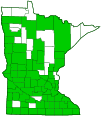field bindweed
(Convolvulus arvensis)
Conservation • Weed • Description • Habitat • Ecology • Use • Distribution • Taxonomy
Description |
Field bindweed is an exotic perennial vine that rises on multiple stems from a deep, twisting, fleshy taproot, rhizomes, and shallow lateral roots. It often forms tangled mats. The stems are slender and usually hairless, sometimes minutely hairy. They appear 4- or 5-angled due to the twisting of the stem. They are usually awkwardly climbing over adjacent vegetation or structures (scrambling), occasionally prostrate on the ground but not rooting at the tip (trailing). The stem grows in a spiral, at least toward the tip, curving around nearby plants (twining), allowing the stem to climb. The leaves are alternate, ⅜″ to 2″ long, and 3 ⁄16″ to 1″ wide. They are on leaf stalks that are always more than, usually much more than, half as long as the midvein of the attached leaf. The leaf blade is variable in shape, triangular to oblong, often arrow-shaped. It is usually rounded, sometimes pointed, at the tip. The base is squared or heart-shaped. There are often basal lobes that are pointed, not squared or trapezoidal, and are directed outward or downward. The upper and lower surfaces may be hairless or have minute hairs. The margins are untoothed. The inflorescence is a solitary flower or a cluster of 1 to 3 flowers rising from the leaf axils. The flowers are funnel-shaped and ½″ to 1″ long and wide. They are on flower stalks up to 2⅜″ long. There are two small, 1 ⁄16″ to 5 ⁄16″ long, leaf-like bracts half way up the flower stalk, well below the base of the flower. There are 5 green, elliptic to almost round, ⅛″ to 3 ⁄16″ long sepals. There are 5 white, often pinkish tinged petals fused into a funnel-shaped tube. The outer margin of the corolla is very shallowly lobed. The flowers open in the morning and close by late afternoon. The fruit is an round to egg-shaped, 3 ⁄16″ to ¼″ long capsule with 2 to 4 seeds. |
Height |
Trailing, ½′ to 6½′ long |
Flower Color |
White, often pinkish tinged |
Similar Species |
Black bindweed (Fallopia convolvulus) is a shorter vine, no more than 40″ in length. The stems and leaves do not have a milky latex. The leaf stalk has an ocrea at the base. The flower is small, ⅛″ to 3 ⁄16″ long, and not showy. The fruit is an achene. Common morning-glory (Ipomoea purpurea) has rounded, heart-shaped, not triangular, arrow-shaped, leaves. The basal lobes of the leaf blade are broadly rounded, not squared off or pointed. The flower is blue to purple. Hedge bindweed (Calystegia sepium) is a larger plant. The leaves are larger, 2″ to 4″ in length. The basal lobes of the leaf blade are trapezoidal. The bracts are much larger, are positioned at the base of the flower, and usually cover the calyx. The flowers are larger, 1½″ to 2¾″ long and wide. Ivy-leaved morning-glory (Ipomoea hederacea) has 3-lobed leaves. The flower is blue to purple. Low bindweed (Calystegia spithamaea) stem is erect, does not twine, and does not get over 20″ long. |
Habitat |
Wet. Stream banks, river banks. Disturbed sites. Full to partial sun. |
Ecology |
Flowering |
June to September |
Pests and Diseases |
|
Use |
|
Distribution |
||
|
Sources |
|
| 6/3/2025 | ||
Nativity |
||
Native to Europe, Asia, Northern Africa, Macaronesia, and the Indian Subcontinent. Introduced and naturalized in North America. |
||
Occurrence |
||
Common |
||
Taxonomy |
|
Kingdom |
|
Subkingdom |
Pteridobiotina |
Phylum |
Tracheophyta (Vascular Plants) |
Class |
|
Order |
Solanales (nightshades, bindweeds, gooseweeds, and allies) |
Family |
Convolvulaceae (bindweed) |
Subfamily |
Convolvuloideae |
Tribe |
Convolvuleae |
Genus |
Convolvulus (bindweeds) |
Subordinate Taxa |
|
|
|
Synonyms |
|
Convolvulus ambigens Convolvulus incanus Strophocaulos arvensis |
|
Common Names |
|
creeping Jenny European bindweed field bindweed morningglory perennial morningglory smallflowered morning glory |
|
Glossary
Bract
Modified leaf at the base of a flower stalk, flower cluster, or inflorescence.
Corolla
A collective name for all of the petals of a flower.
Rhizome
A horizontal, usually underground stem. It serves as a reproductive structure, producing roots below and shoots above at the nodes.
Scrambling
Climbing awkwardly over adjacent vegetation or structures.
Sepal
An outer floral leaf, usually green but sometimes colored, at the base of a flower.
Trailing
Prostrate on the ground and creeping, but not rooting at the tip.
Twining
Growing in a spiral usually around a stem of another plant that serves as support.
Visitor Photos |
||
Share your photo of this plant. |
||
This button not working for you? |
||
|
||
MinnesotaSeasons.com Photos |
||
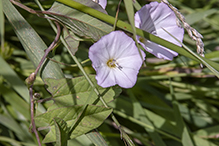 |
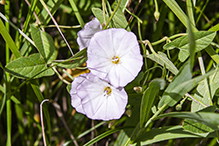 |
|
Plant |
Plant |
|
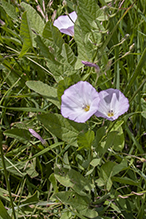
|
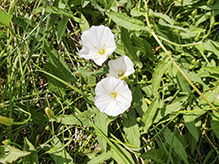 |
|
Plant |
||
|
||
| Plant |
|
|
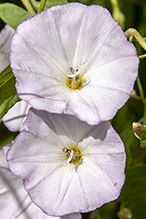 |
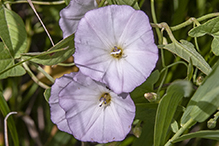 |
|
Flowers |
||
|
||
|
||
Flowers |
|
|
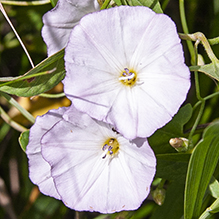 |
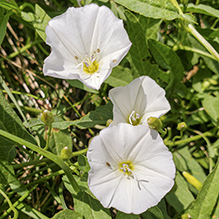 |
|
Flowers |
Flowers |
|
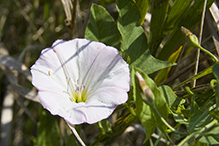 |
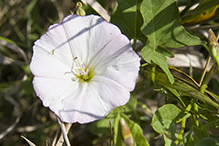 |
|
Flower |
Flower |
|
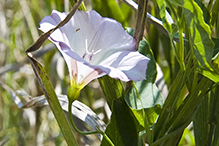 |
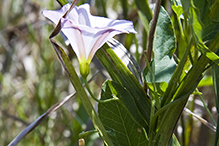 |
|
Leaf-like bracts half way up the flower stalk, well below the base of the flower |
Leaf-like bracts half way up the flower stalk, well below the base of the flower |
|
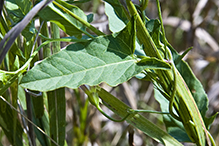 |
||
Leaf |
|

Slideshows |
Field Bindweed |
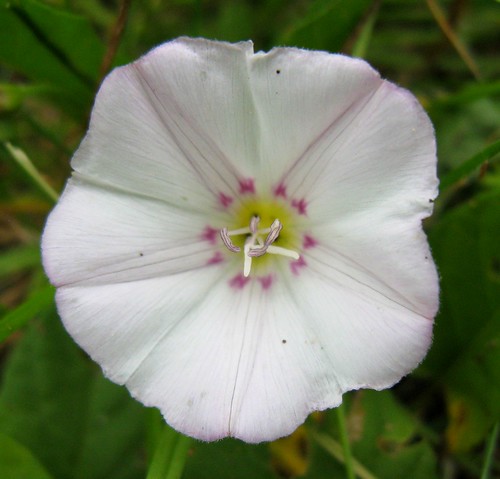
|
About
Field Bindweed (Convolvulus arvensis). |
Convolvulus arvensis FIELD BINDWEED |

|

Visitor Videos |
||
Share your video of this plant. |
||
This button not working for you? |
||
|
Other Videos |
||
Bee Fly Pollinating Field Bindweed Flowers (Convolvulus arvensis) ~ Invasive Species |
About
Published on Nov 28, 2013 I miss the sights and sounds of summer already : ) Field Bindweed (aka Lesser Bindweed or Morning Glory) flowers being pollinated by a bee fly in the Bombyliidae family.. I want to try to narrow down what species of fly this is. I found its wings interesting - partly black, partly transparent, with a zig zag pattern delineating the two colourations of the wing. Field Bindweed is an invasive species in North America and is native to Europe and Asia. In areas it is introduced, it can outcompete and choke out native grasses and forbs. It is also very difficult to eradicate from gardens. Tags: morning glory flowers, European bindweed, withy wind, perennial morning glory, smallflowered morning glory, creeping jenny, possession vine, bee fly, bee flies, Asiloidea. |
Field Bindweed (Convolvulus Arvensis) - 2012-09-08 |
About
Published on Sep 11, 2012 Convolvulus arvensis (Field Bindweed) is a species of bindweed or morning glory. -------------- |
Weed of the Week #793 - Field Bindweed (Air Date 6/16/13) |
About
Published on Jun 27, 2013 It's our Weed of the Week, Field Bindweed. |
Bindweeds.wmv |
About
Uploaded on Dec 7, 2009 video weed identification of field bindweed and hedge bindweed plants |
Environmental Laboratory - U.S. Army Corps of Engineers |
About
Published on Feb 15, 2013 Convolvulus arvensis - Field Bindweed |

Visitor Sightings |
||
Report a sighting of this plant. |
||
This button not working for you? |
||
|
|
MinnesotaSeasons.com Sightings |
||

|
Created: 11/15/2009 Last Updated: © MinnesotaSeasons.com. All rights reserved. |
